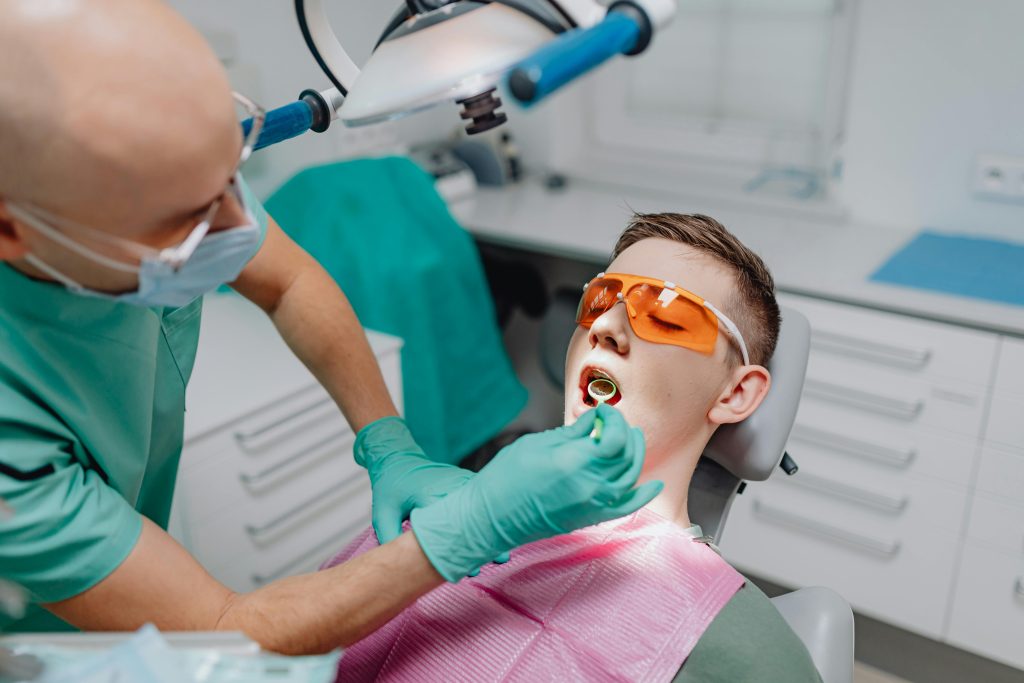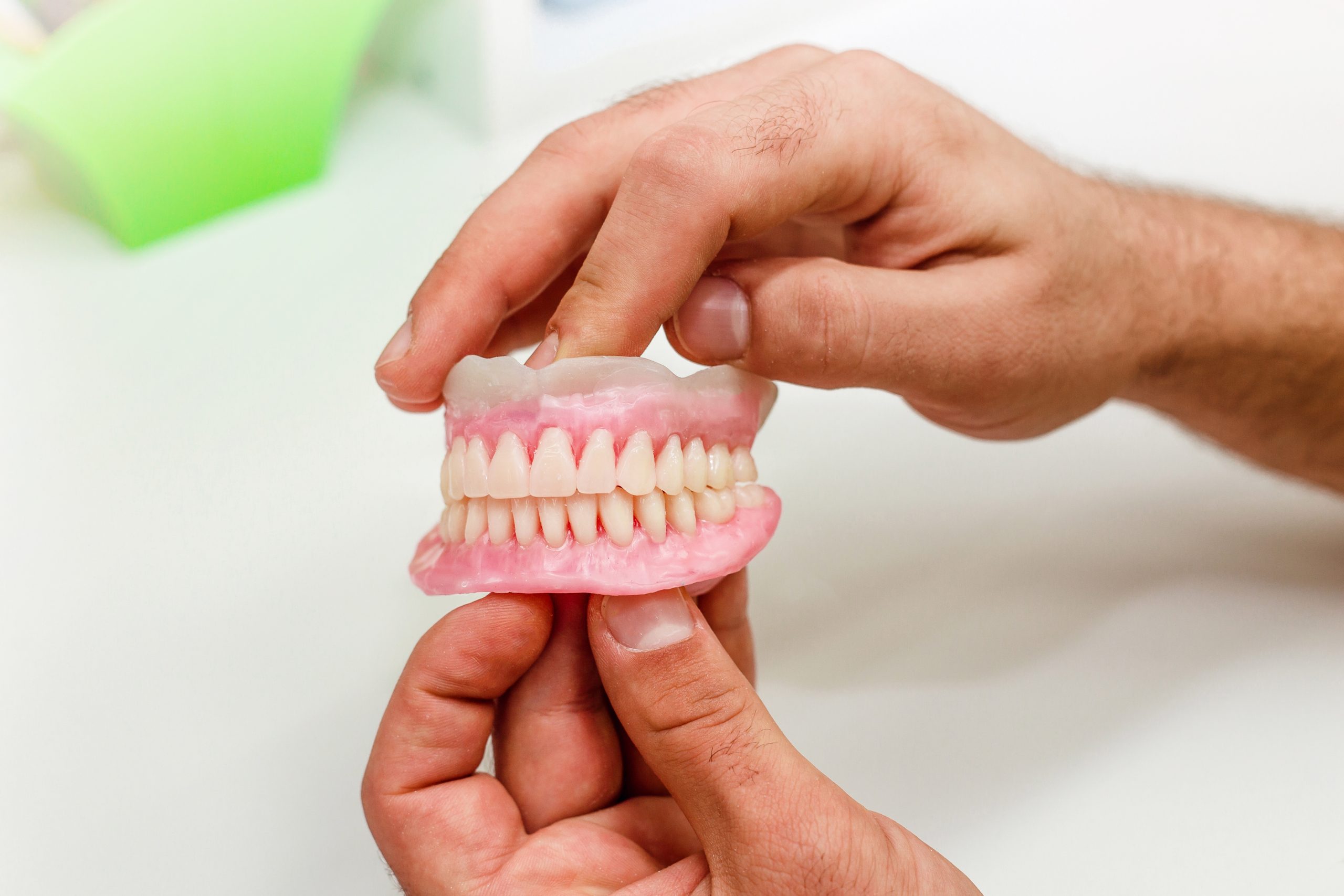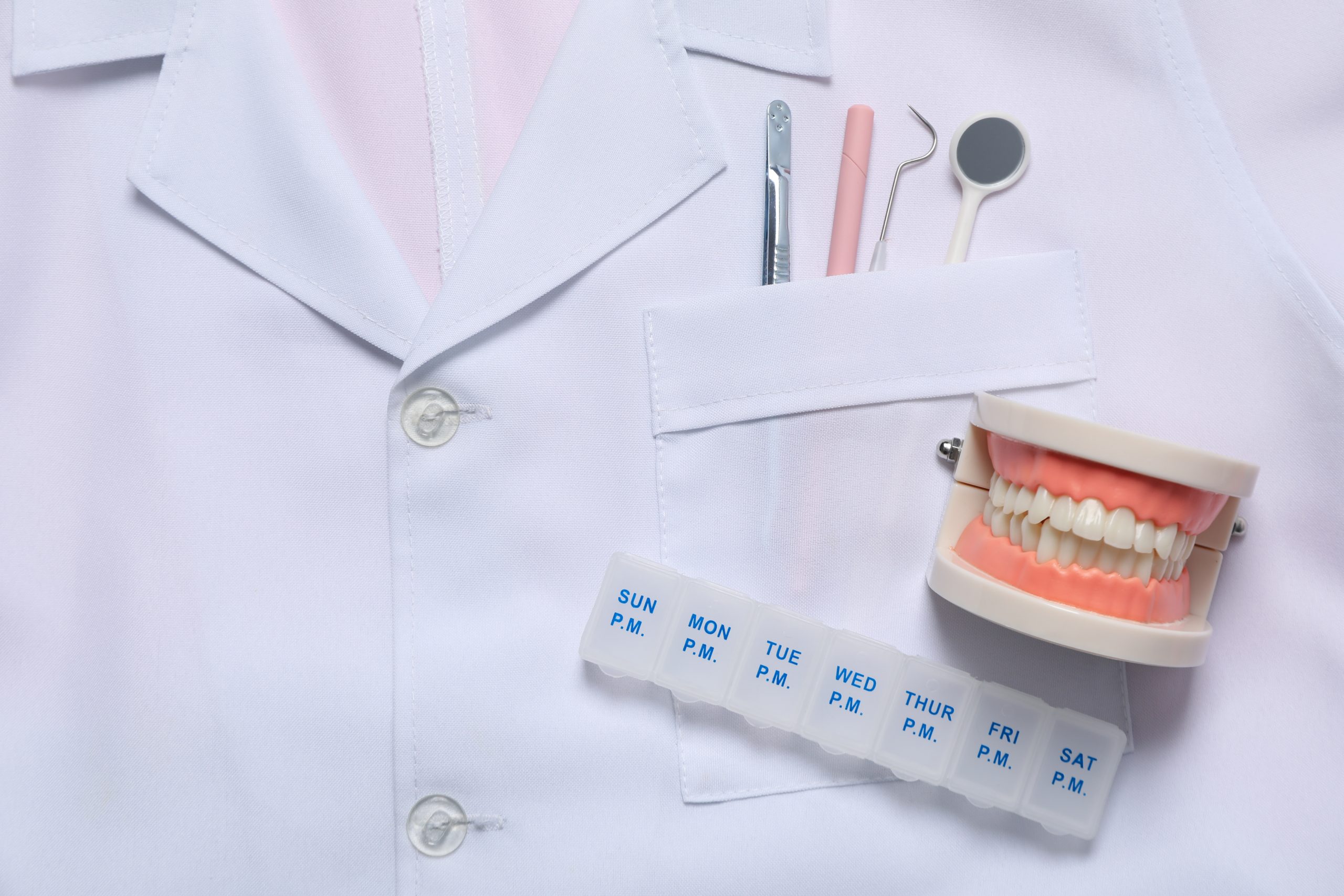Dental crowns are custom-made caps that cover and protect a damaged or weakened tooth. While they’re often associated with adult dental care, they can also play an important role in preserving a child’s oral health. Parents are sometimes surprised to learn that this treatment may be recommended for children, especially if their child still has baby teeth.
In children, dental crowns are usually used when a tooth has been affected by extensive decay, trauma, or developmental enamel defects. They can help protect the tooth and maintain function until it naturally falls out or is replaced by an adult tooth. Treatment recommendations are always based on an individual assessment by a registered dentist, considering your child’s specific needs and oral health status.
In this blog, we’ll explore the question, “When would a child need a crown?” We’ll explain the clinical reasons behind this treatment and discuss what signs might prompt a dentist to consider it. We’ll also describe what the procedure usually involves. Our goal is to help parents feel more informed and confident when navigating their child’s dental care.
Summary of the Content:
- A dental crown is a protective cap placed over a damaged tooth to restore its shape, strength, and function.
- Based on clinical judgement, dentists may recommend crowns for children with severe decay, large fillings, or after certain treatments.
- If a cavity is too large for a filling to hold, a crown may serve as a stronger, longer-lasting restoration.
- After pulp therapy, a crown helps protect the remaining tooth structure and reduce the risk of further damage.
- Children with enamel defects like hypoplasia may need crowns to protect weak teeth and support everyday function.
- Stainless steel crowns are often used on baby molars because they’re strong, affordable, and reliable for back teeth.
- Tooth-coloured zirconia crowns are sometimes used on front teeth when a natural appearance is preferred and clinically suitable.
- These crowns are designed to last until the baby tooth falls out naturally, with regular dental visits helping to maintain their effectiveness.
What Is a Dental Crown for Children?
A dental crown is a small cover that fits over a tooth to protect it. While crowns are often used in adult dentistry, they can also be helpful for children. When a baby tooth is badly damaged, a crown may be needed to preserve it until the time it’s naturally replaced by an adult tooth.
Crowns for children are not the same as those used for adults. They’re designed to suit the size, shape, and short-term role of baby teeth. Here’s how they differ and why they may be recommended:
- Short-term purpose:
Crowns for baby teeth are designed to stay on only until the tooth is ready to fall out. They play an important role in protecting the tooth during the years when your child is learning to chew and speak. They also help promote healthy eating habits and keep the space ready for the adult tooth that will follow. - Material choices:
Crowns used in children’s dentistry are commonly made from stainless steel or tooth-coloured zirconia. Stainless steel crowns are usually used on back teeth because they’re strong and low-maintenance. On the other hand, zirconia crowns may be chosen for front teeth when appearance is a consideration. - Quicker treatment time:
Crowns placed on baby teeth usually take less time than those used for adults. This helps make dental visits easier for young children, especially if they are feeling anxious or find it hard to sit through longer procedures. - Made for baby teeth shape:
Baby teeth are smaller and shaped differently from adult teeth. Crowns for children are made to match these features so that they sit comfortably in the mouth. This allows your child to eat and speak without discomfort. - Focus on function:
Crowns in children are not placed for cosmetic reasons. They are used to keep the tooth healthy and allow your child to continue everyday activities. They also help hold space for the adult tooth to come through in the right position.
Why Would a Dentist Recommend a Crown for a Child?
A crown may be recommended when a baby tooth is too damaged or fragile to hold a filling. Dentists base this decision on clinical judgement after examining the tooth’s condition and long-term needs. The aim is to protect the child’s comfort, function, and oral development.
Severe Tooth Decay That Cannot Be Restored With a Filling
When a baby tooth has a large cavity, it may lose too much structure for a filling to stay in place. These weakened teeth are more likely to break or lose fillings during everyday chewing. A crown provides added strength and helps protect the tooth until it’s ready to fall out.
Crowns also reduce the risk of infection or pain from further decay. They help your child eat and speak without discomfort. Keeping the baby tooth in place also helps guide the adult tooth into position.
Protection After Pulp Therapy or Root Canal Treatment in Baby Teeth
If decay reaches the inside of a tooth, your child may need pulp therapy to remove infected tissue. After this procedure, the tooth is often weaker and more prone to damage. A crown is placed over it to keep the tooth sealed and stable.
This protection helps avoid future treatment on the same tooth. It also supports your child’s ability to chew and speak comfortably. A sealed crown lowers the chance of reinfection.
Teeth with Developmental Defects or Weak Enamel
Some children are born with enamel that hasn’t developed properly, such as in enamel hypoplasia. These teeth can be more sensitive and wear down more quickly. They may also appear rough, patchy, or discoloured.
A crown covers and strengthens the tooth surface. It helps protect the tooth from further damage or discomfort. This allows your child to eat, smile, and brush more comfortably until the adult tooth comes through.
Types of Crowns Used for Children
Different types of crowns are used in children’s dentistry, depending on the tooth involved, the level of damage, and the child’s specific needs. Each crown material is selected based on safety, effectiveness, and how well it suits baby teeth.
Stainless Steel Crowns
Stainless steel crowns are widely used for back baby teeth when strength and durability are essential. They are often chosen for primary molars and are known for being cost-effective and reliable.
Below are several reasons why children’s dentists often recommend them for molar teeth:
- Long-lasting protection:
Stainless steel crowns can withstand the chewing forces at the back of the mouth. This makes them suitable for children who need reliable protection on molars that must last until the adult teeth come through. They are rarely damaged once placed properly. - Simple placement process:
Stainless steel crown procedures are relatively quick and easy for dentists to perform. This can reduce time in the chair, which is helpful for younger children or those who find dental visits stressful. Fewer appointments may be needed compared to more complex treatments. - Good fit for baby molars:
They come in pre-made sizes that match the natural shape of baby molars. This allows dentists to restore the tooth with very little shaping beforehand. The process is efficient and minimally invasive. - Cost-effective option:
Stainless steel crowns are generally one of the more affordable choices for restoring baby teeth. This can make them more accessible for families and still provide good protection. Their low maintenance needs also help reduce long-term dental costs.
Zirconia Crowns
Zirconia crowns are tooth-coloured and often used for front baby teeth where appearance is more noticeable. They are smooth, biocompatible, and shaped to match natural baby teeth.
Below are key reasons a dentist may recommend zirconia crowns for specific situations:
- Tooth-coloured appearance:
Zirconia crowns are designed to blend in with the natural colour of baby teeth. This can be helpful when restoring front teeth, especially for children who are concerned about how their smile looks. The white colour offers a more natural finish than metal. - Used for visible teeth:
These crowns are generally chosen when the affected tooth is near the front of the mouth. They are not commonly used for molars unless clinically indicated. Dentists consider their location, visibility, and the child’s overall dental needs. - Smooth and polished surface:
Zirconia has a smooth, polished finish that reduces plaque buildup around the crown. This can make it easier to keep clean, which is important for young children learning good oral hygiene. The smooth surface may also feel more natural in the mouth. - Clinically guided choice:
Zirconia crowns are only used when they meet a child’s specific clinical needs. While appearance matters, the dentist’s priority is the tooth’s health and function. Decisions are based on what’s safe and appropriate for the child.
Other Less Common Options
In certain situations, dentists may use alternative crown materials based on the child’s dental condition. These options are less common but might be recommended according to a child’s specific needs:
- Resin-based crowns:
These crowns are made of a tooth-coloured resin material. They may be used when a quick, temporary child tooth restoration is needed or when other materials are not suitable. However, they are less durable and are not usually used on molars. - Customised crown types:
In some cases, dentists may modify crown materials or techniques based on the child’s bite or oral habits. This may include using hybrid materials or combining approaches for comfort and function. These decisions are based on what will work for the child.
Less common crown types are only used when the child’s condition requires a more tailored approach. Dentists will always choose the option that meets safety and clinical goals.
What Is the Process of Getting a Crown for a Child?
Getting a crown for a child usually follows a series of clear and carefully planned steps. Each stage is based on the child’s needs and the condition of their tooth. Children’s dentists aim to make the experience as comfortable and stress-free as possible.
Below is a step-by-step outline of how the process generally works:
- Initial assessment and diagnosis:
The question “When would a child need a crown?” is usually addressed during this stage. The dentist begins by examining the tooth and taking any necessary X-rays. This helps assess the extent of infant tooth decay, damage, or weakness. Based on this, they will determine if a crown is a suitable option. - Discussing treatment options:
If a crown is recommended, the dentist will explain why it’s needed and discuss the types of crowns available. They’ll talk through the procedure and answer any questions parents or carers may have. The goal is to help everyone understand what to expect. - Preparing the tooth:
The tooth is gently shaped to make space for the crown. This tooth preparation process involves removing any damaged or decayed parts and smoothing the surface. Numbing gel or local anaesthetic may be used to help the child stay comfortable during this step. - Fitting the crown:
A pre-made crown (usually stainless steel or zirconia) is selected to fit the tooth’s shape. It may be gently trimmed or shaped to sit comfortably over the tooth. Once the fit is confirmed, crown placement is completed by cementing it securely in place. - Checking the bite and comfort:
The dentist checks how the crown fits with the other teeth when your child bites down. Small adjustments may be made so that the crown feels right and doesn’t affect chewing. The child is encouraged to move their mouth and give feedback. - Aftercare instructions:
The dentist will explain how to care for the crown at home and what to avoid. This includes brushing gently, limiting sticky foods, and attending regular dental check-ups. They’ll also let you know what to expect in the days after treatment.
How Long Do Crowns on Baby Teeth Last?
Crowns on baby teeth are designed to last until the entire tooth naturally falls out. Although they are strong and built to function like natural teeth, their lifespan depends on a few individual factors.
Below are some of the reasons why the durability of a crown can vary slightly from child to child:
- Tooth position:
Baby molars do the majority of the chewing, which puts more pressure on crowns placed at the back of the mouth. These crowns need to withstand daily forces from biting and grinding food. In contrast, crowns on front teeth tend to experience less force, which can help them last longer. - Material used:
Stainless steel crowns are usually used on baby molars because they are strong, reliable, and designed to handle heavy chewing. For front teeth, tooth-coloured materials like zirconia are sometimes chosen for cosmetic reasons. While still durable, zirconia crowns may be more prone to small chips if exposed to excess force. - Oral hygiene habits:
Good brushing and flossing help prevent plaque accumulation around the crown and gumline. If plaque is left to build up, it can lead to gum inflammation or decay around the crown edges. Daily care at home helps the crown stay secure and the tooth remain healthy until it’s lost as part of normal development. - Individual bite or habits:
Some children grind their teeth at night or chew on pencils, toys, or fingernails. These habits can put extra pressure on crowns and cause them to wear down more quickly. If your child has a strong bite or known habits like clenching or grinding, the dentist may adjust the crown choice or provide tips for protecting it.
Routine dental visits allow the dentist to check that the crown is still fitting well and doing its job. With proper care and monitoring, crowns can protect baby teeth until they are ready to be replaced by adult teeth.
Are Crowns on Children’s Teeth Safe?
Yes, dental crowns are commonly used in children and are considered a safe and effective option when placed appropriately. Dentists select materials and techniques that are backed by research and approved for use in young patients.
Below are several reasons why crowns on children’s teeth are considered safe in everyday dental care:
- Use of approved materials:
Crowns for children are made from materials that have been tested and approved for use in paediatric dentistry. These include stainless steel and zirconia, both of which meet national and international safety standards. They are selected for their strength, stability, and biocompatibility with a child’s mouth. - Placed by registered dentists:
Only registered dental professionals are qualified to assess whether a crown is needed and perform the procedure. Dentists use their clinical judgement to decide on an appropriate treatment based on the child’s age, dental health, and development. Their decisions follow guidelines set out by local regulatory bodies. - Adherence to strict safety protocols:
Dental clinics follow strict infection control and material handling protocols to protect the health of every child. This includes sterilisation, safe cementing materials, and well-documented clinical procedures. These processes help create the right conditions for placing each crown safely and hygienically. - Ongoing monitoring and follow-up care:
After a crown is placed, dentists continue to monitor it during regular check-ups. This allows them to check how the crown is wearing and whether it’s still providing the needed support for the tooth. Any concerns can be addressed early, keeping the crown—and the surrounding teeth—healthy. - Temporary support until the adult tooth arrives:
Crowns on baby teeth are not long-term, but they are made to last until the tooth naturally falls out. Their job is to protect the baby tooth as the child eats, speaks, and grows. When the adult tooth is ready to erupt, the crown will come out naturally with the baby tooth.
Caring for a Child’s Crown at Home
Once a crown has been placed on a baby tooth, caring for it at home is just as important as the procedure itself. Good habits help keep the crown secure and the surrounding gums healthy.
Below are some practical everyday tips to help parents care for their child’s crown:
- Brush gently but thoroughly:
Encourage your child to brush their teeth twice a day using a soft-bristled toothbrush. Pay attention to the gumline around the crown to remove food particles and plaque. Using a fluoride toothpaste suited to your child’s age can help keep the area clean and protected. - Introduce flossing when appropriate:
If the crown is between two teeth, gentle flossing can help keep the area clean and free from food and bacteria. Parents may need to assist younger children until they can manage flossing independently. Your dentist can advise on the appropriate age and technique for your child. - Avoid sticky or hard foods:
Chewy lollies, toffees, or hard snacks can loosen or damage the crown over time. Encouraging softer, tooth-friendly options, such as yoghurt, bananas, scrambled eggs, pasta, or well-cooked vegetables, can reduce the risk of dislodgement. Healthy eating habits also play a role in keeping the gums and teeth stable around the crown. - Watch for changes or discomfort:
Let your child’s dentist know if the crown feels loose, causes discomfort, or looks different. Early signs of wear or gum irritation can often be managed quickly with a minor adjustment. Prompt attention helps avoid further issues.
Regular dental check-ups are essential for monitoring the crown’s function and for identifying any concerns early.
Will a Crown Affect My Child’s Smile or Future Adult Teeth?
Parents often wonder if a crown placed on a baby tooth could affect their child’s developing smile or future adult teeth. In many cases, crowns promote healthy oral development rather than interfere with it.
Below are some ways a crown may influence your child’s dental health.
- Maintains spacing for adult teeth:
Baby teeth act as placeholders for adult teeth. When a crown preserves a damaged baby tooth, it helps keep the space open for the adult tooth to come through in the right position. This can reduce the chances of crowding or misalignment later on. - Protects tooth function and shape:
A crown restores the size and strength of a damaged tooth. This allows your child to chew, speak, and smile comfortably. It also helps prevent surrounding teeth from shifting. - Restores the natural appearance of front teeth:
Tooth-coloured crowns on front baby teeth can improve appearance by matching the shape and colour of the original tooth. However, their placement is based on clinical need—not appearance alone. Any cosmetic benefit is a secondary outcome of restoring the tooth’s function. - Does not affect adult teeth underneath:
Crowns on baby teeth sit above the gums and do not interfere with the developing adult tooth. They are designed to last only until the baby tooth is naturally ready to fall out. Once the tooth is shed, the crown comes out with it.
When recommended by a dentist, crowns are used to maintain normal growth and function, not change it.
Final Thoughts
Many parents find themselves wondering, “When would a child need a crown?” This is a question that can only be answered through a clinical examination by a registered dentist. Treatment decisions are made based on your child’s specific dental needs and the condition of the affected tooth.
Early signs, such as tooth decay, discomfort, or visible damage, should prompt a visit to the dentist. While baby teeth eventually fall out, allowing a problem to persist can affect a child’s ability to chew, speak, or smile comfortably. Addressing concerns early can help preserve the tooth until it’s naturally ready to come out.
Ashburton Dental Centre offers dental care for children, including clinical assessment and treatment planning for baby teeth. Our services follow AHPRA guidelines and meet current national dental standards. If you have concerns about your child’s teeth, our team can explain the available treatment options.




